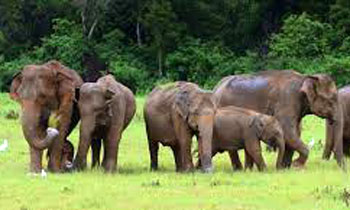
Wild Elephant Management Zone is a joke
Wildlife conservation officers are concerned about the on going clearing of the jungle in the Hambantota wildlife zone without declaring the boundaries of the proposed Wild Elephant Management Zone. They said more than 400 wild elephants had lost their natural habitats making them to roam into human habitats. They pointed out that this alarming situation aggravated the human elephant conflict. Chairman of the Wildlife Conservation Research Institute Dr. Prutuvi Raj Fernando said the only way to prevent this situation was to declare the proposed Wildlife Management Zone but it had been dragging on for years. He said the relevant authorities were reluctant to implement it and that over 50 per cent of the proposed forest reserve had been cleared. (Santha Gamage) See more
Source- 7/02/2017,Daily Mirror/ See more at: http://www.dailymirror.lk/article/Wild-Elephant-Management-Zone-is-a-joke-123416.html#sthash.rLAP6YC0.dpuf

Environmental Protection And Sustainable Development In Sri Lanka
There can be no economy when there is no efficiency
-Benjamin Disraeli-Letters
This column dedicated to the notion of fulfilling the aspirations of Sri Lankan society turns its spotlight on the protection of the environment in Sri Lanka while engaging in sustainable development that will fulfill the aspirations of all Sri Lankans thereby ensuring preservation of the environment in our land.
 Environmental concerns in Sri Lanka include deforestation; soil erosion; wildlife populations threatened by poaching and urbanization; coastal degradation from mining activities and increased pollution; freshwater resources being polluted by industrial waste and sewage runoff; waste disposal; and air pollution in Colombo and other cities due to emissions from motor vehicles and factories and other industrial establishments.
Environmental concerns in Sri Lanka include deforestation; soil erosion; wildlife populations threatened by poaching and urbanization; coastal degradation from mining activities and increased pollution; freshwater resources being polluted by industrial waste and sewage runoff; waste disposal; and air pollution in Colombo and other cities due to emissions from motor vehicles and factories and other industrial establishments.
The forests in Sri Lanka have been removed to make way for agricultural land and plantations and to provide fuel and timber. The sale of timber is a part of the national economy to raise revenue. The country is a major producer of tea and the land required for tea plantations is substantial. Population pressure is also a significant factor as is the removal of forested areas to make way for irrigation networks which were a major process in the 1980s. Apart from the environmental implications deforestation in Sri Lanka has caused ill effects such as flooding, landslides and soil erosion from exposure of the deforested areas. It is also the primary threat to the survival of Sri Lanka’s biodiversity. Sri Lanka has 751 known species of amphibians, birds, mammals and reptiles of which 21.7 percent are endemic, and over 3314 species of vascular plants, of which 26.9 percent are endemic.
One of the main threats to the sustainability of Sri Lanka’s forests is government development policies in relation to the demand for timber and fuel and also the need to create plantations to raise revenue. Government policies are focused primarily on timber production and tree plantations. The Sri Lankan government working in conjunction with multi-national institutions has seen a major change in timber harvesting in Sri Lanka for the cause of sustainable development. Commercial plantations have gradually been brought under management system in Sri Lanka to produce wood in an economically efficient and sustainable way.
The harvesting, processing and the sale of wood products from state forests is conducted by the state owned State Timber Corporation. In the 1980s the cause progressed significantly with the Asian Development Bank (ADB) funding the Community Forestry Project (CFP) which concentrated on the development of fuelwood plantations and agro-forestry in 5 of the 25 districts of Sri Lanka. While illegal logging in Sri Lanka is not a major problem as it is in many countries, deforestation has still affected the lives of every day people in some parts of Sri Lanka where removal of forests has resulted in greater time and energy being spent gathering firewood typically by women who have to travel relatively long distances, affecting their health and well-being. Deforestation is one of the most serious environmental issues in Sri Lanka. In the 1920s, the island had a 49 percent forest cover but by 2005 this had fallen by approximately 20 percent. Between 1990 and 2000, Sri Lanka lost an average of 26,800 hectares of forests per year. This amounts to 1.14 percent of average annual deforestation rate. Between 2000 and 2005 the rate accelerated to 1.43 percent per annum.
However with a long history of policy and laws towards environmental protection, deforestation rates of primary cover have actually decreased to 35 percent since the end of the 1990s due to a strong history of conservation measures. The problem of deforestation in Sri Lanka is not as significant in the southern mountainous regions as it is in northern Sri Lanka, largely due to the nature of environmental protection.
The government and international environmental organizations have taken several steps to address the problem over the years, establishing national parks, reserves and sanctuaries, which now cover as much as 15 percent of the island’s total area as at 2007. The Sinharaja Forest Reserve, which was established in 1978 to protect the nearly extinct tropical lowland rain forest, was flagged as a World Heritage Site in 1988.
The history of environmental policy and law in Sri Lanka however goes back much further in history. In 1848, the Timber Ordinance No. 24 was signed for the reservation of forests, largely for timber production. In 1873, Hooker advocated the protection of natural forests above 5000 feet as climatic reserves and in 1938 a law was passed prohibiting the removal of forest above 5000 feet. In 1885, the Forest Ordinance No. 10 for the Conservation of Forests saw some protection of forests primarily for sustainable wood production but also some protection of wildlife in sanctuaries.
This was developed further in 1907 with Forest Ordinance No. 16 with some protection of forests and their products in reserved forests and village forests, again for the controlled exploitation of timber. In 1929 the first authoritative forest policy statement was given in regard to species protection and in 1937 the Fauna and Flora Protection Ordinance No. 2 was signed with the intention of protecting the wildlife in national reserves. However this was restricted to wild life in sanctuaries, and such habitats were protected only on state land, with complete freedom to exploit privately owned land. The Amendment Act No. 44 in 1964 saw the nature reserves and jungle corridors formally recognized as categories of Sri Lanka’s protected areas of national reserve.
In 1990, the National Policy for Wildlife Conservation was approved by the Sri Lankan cabinet with the prime objectives of sustaining the ecosystems and ecological processes and the preservation of genetic diversity. The government also introduced a logging ban that was implemented in all natural forests in Sri Lanka under the Forestry Sector Development Programme. In 1993 Amendment Act No. 49 also added Refuge, Marine Reserves and Buffer Zones as additional formal categories to the definition of the national reserve. Any degradation of the forest resource in Sri Lanka is dynamically related to the increasing demand for timber and fuel wood. Central to the sustainability of the forests of Sri Lanka in the future is the rate of population pressure and economic growth Not only will a growing population demand more fuel, they will also place a higher demand for housing construction materials with wood ,
Interference with nature results in disastrous effects. Several forest fires were reported during the past few weeks. The indiscriminate dumping of garbage in cities especially in Colombo has led to the spread of diseases. Colossal waste of public funds to purchase a luxury limousine for the use of the Mayor of Colombo was reported recently. These funds could have been used to purchase machinery for garbage conversion into manure. The Mayor has been reported saying that as Cabinet Ministers are using expensive limousines that he too is entitled to use such a vehicle. What service have these public officials and Ministers rendered to the people of Colombo or Sri Lanka to engage in such wasteful expenditure of public funds? Before demanding comforts these persons must render valuable service to the people.
The colossal waste of funds spent for the Anuradhapura Deyata Kirula Exhibition replete with many performances could have been used to provide a water purification plant for the people of Anuradhapura and suburbs who are dying of kidney ailments due to the intake of heavy metals in the dirty water they are forced to consume. Before beautifying cities and building road networks the basic needs of the people such as food, clean drinking water, adequate supplies of medicines in hospitals and other essentials for the sustenance of life of the citizens must be provided.
The abominable wasteful expenditure of public funds should be terminated forthwith for the welfare of the country. The President who has stated on several occasions that he holds power as a public trustee has advised public officials to make the best use of public funds. Addressing the Matale District Development Committee Meeting last week the President said that, ‘Everyone is duty bound to make the utmost contribution to society and the country. Similarly, public funds should be utilized carefully for the betterment of the country to gain maximum returns and productivity’(Daily News 3rd July 2012 pp.1and 8). Excellent advice indeed but whether the public officers follow such advice in practice appears to be doubtful. While an electrical energy or power crisis is looming in the near future with the water levels decreasing in the catchment areas the public institutions and commercial establishments seem to be switching on all billboards and illuminating their showrooms wasting valuable electrical energy late into the night in the city of Colombo.
As usual let me conclude with an amusing anecdote. The teacher asked the class to write an essay on what they would do if they had a million dollars. But, little Johnny handed in a blank paper. The teacher asked, ‘Johnny you have done nothing why?’ ‘Because,’ he replied ‘that is exactly what I’d do if I had a Million Dollars’.
We as Sri Lankans may now understand the reason why corrupt politicians and public officials do nothing for the motherland but relax and enjoy their existence wasting public funds.
May all celestial beings protect our motherland.
http://www.thesundayleader.lk/2012/07/08/environmental-protection-and-sustainable-development-in-sri-lanka/
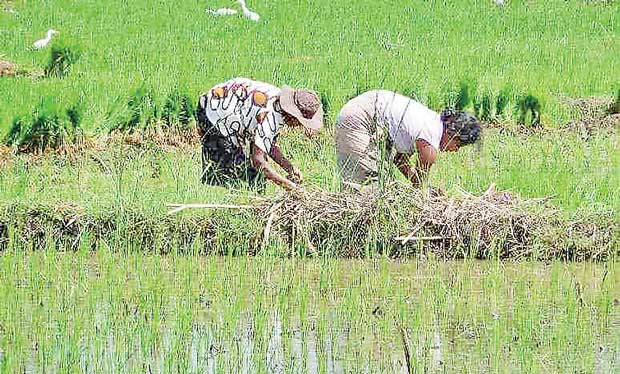
New ‘green’ fertilizer trialled on Lankan rice farms could contribute to food revolution: scientists
Thomson Reuters Foundation: A new synthetic fertiliser could help farmers to save money, boost food production and reduce planet-warming emissions, scientists have found after trialling it on rice farms in Sri Lanka. By slowing down the release of nutrients the fertiliser will help farmers to increase crop yields using less chemicals, the scientists from Britain and Sri Lanka said. Chemical fertilisers such as the nitrogen-rich urea were key to the agricultural boom of the 1960s and 70s known as the “Green Revolution” but their cost remains relatively high for farmers in the developing world. Agricultural production must rise by about 60 percent to feed a growing global population, expected to reach 9 billion by 2050, according to the United Nation’s Food and Agriculture Organisation(FAO). Urea, commonly used to grow rice, wheat and maize, dissolves quickly when in contact with water and part of its nutrients are washed away before crop roots can absorb them.As a consequence, more applications are needed, which can prove too expensive for farmers in poor regions, the scientists wrote in the scientific journal ACS Nano this week. Moreover, unabsorbed urea particles go on to form ammonia that pollutes waterways and eventually causes the release of greenhouse gases into the atmosphere. The new fertiliser delays the dissolution of urea by binding it with a mineral to slow down the release of nutrients 12 times, the scientists said. “The plant takes up more of the fertiliser and less is wasted,” said Gehan Amaratunga of the University of Cambridge in Britain, co-author of the report. “This goes a long way to reduce the environmental footprint of agriculture,” he told the Thomson Reuters Foundation by telephone on late Thursday. Initial trials using the new fertiliser on rice farms in Sri Lanka showed production grew up to 20 percent using almost half the amount of fertiliser, Amaratunga said. Amaratunga said he hoped the innovation could help usher in a new, more eco-friendly Green Revolution. “It is a Green Revolution…as it’s more food and less environmental damage,” he said.
Source-30/01/2017,Daily Mirror/ See more at: http://www.dailymirror.lk/article/New-green-fertilizer-trialled-on-Lankan-rice-farms-could-contribute-to-food-revolution-scientists-122925.html#sthash.epNhPLaI.dpuf
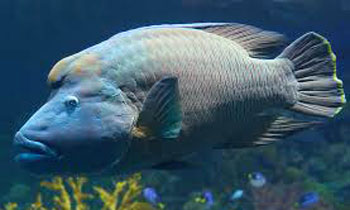
NARA recommends Min.of Fisheries to ban Humphead killing
The National Aquatic Resources Research and Development Agency (NARA) yesterday said it would soon send its recommendations to the Ministry of Fisheries to ban the killing of Humphead fish in Sri Lanka.
Recent killing of this species was reported in the Unawatuna area because pictures of killing a Humphead went viral on social media recently.
NARA’s Marine Biology division head Dr. Sisira Haputantri said the fish Humphead Wrasse
scientifically identified as Cheilinus Undulates is listed as an endangered species category in the International Union for Conservation of Nature (IUCN) red list of threatened species.
He further said that Sri Lanka had not yet implemented a law against kill
ing this fish.
“Dr. Sisira Haputantri said the Humphead Wrasse one of the largest living member of the family Labridaeis an enormous coral reef fish-growing over six feet long-with a prominent bulge on its forehead and it is a very rare fish that was identified as an endangered fish. The fish could be seen in Sri Lanka’s coral reef sea water areas but is nowhere common.”
“Spear fishing which is the greatest threat that these fish facing, in many areas of the country. Unfortunately no regulation has been implemented yet to save this fish. But we will send our recommendation immediately to the Ministry of Fisheries to implement such a rule as a measure to save this species”, he said.
“Spear fishing activities using spear guns also should be banned and the law should be armed with sufficient regulations to save these endangered species,” he said.
Speaking on the matter, Department of the Wild Life Conservation Deputy General (Law) , S P A G B. Samarakoon confirmed that no regulation had been passed so far to protect these species but they have identified the need and working on to implement one in near future.
According to the Wild Life’s Fauna and Flora protection (Amendment) Act, No. 22 of 2009 this variety of fish has not been listed as an endangered species in Sri Lanka.
However, the Daily Mirror learns that the there is a sudden hike in fish hunting specially involving big ornamental fish which has a demand in the international market.
Cap – A Humphead Wrasse which was hunted during spearfishing activities in a private diving centre in Unawatuna. (Thilanka Kanakarathna)
Source-27.01.201,Daily Mirror/See more at: http://www.dailymirror.lk/article/NARA-recommends-Min-of-Fisheries-to-ban-Humphead-killing-122808.html#sthash.Tc45INpp.dpuf
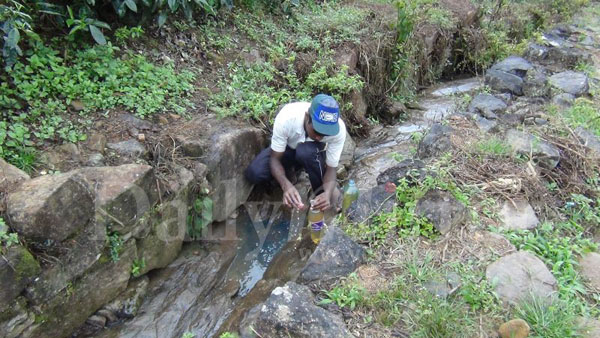
Diesel bowser topples in Hatton
A bowser transporting 33, 000 liters of Diesel from Muthurajawela to Kotagala had toppled at the Malliappuwa on the Hatton-Colombo main road today. A large amount of Diesel flowed down the drains in to the Hatton Oya. Pix by Ranjith Rajapaksha .Source-26/01/2017,Daily Mirror/See more
Source-26/01/2017,Daily Mirror/See more at: http://www.dailymirror.lk/article/Diesel-bowser-topples-in-Hatton-122798.html#sthash.zIxpxQWP.dpuf
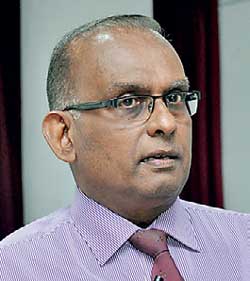
Tourism stakeholder proposes ‘colourful stories’ to sell wildlife to tourists
Stakeho lders engaged in marketing Sri Lanka tourism should be creating colourful stories of the wildlife experiences in Sri Lanka instead of presenting basic facts in order to better promote tourism, an industry veteran stressed recently. “There is no promotion or communication, not necessarily by the Sri Lanka Tourism Promotions Bureau, but by private companies too. We need to create unusual stories,” an ex-President of The Hotels Association of Sri Lanka (THASL), Srilal Miththapala said, at an event organized at the Ceylon Chamber of Commerce recently. Miththapala, a well-known wildlife enthusiast, said that when a potential tourist calls a hotel or a travel agency to inquire about the wildlife attractions in Sri Lanka, the employees usually list the animals that could be observed, instead of portraying wildlife in an attractive manner. “They don’t need to know that the animals are there. Anyone can find that out. They need to hear the stories,” he said. This wo
lders engaged in marketing Sri Lanka tourism should be creating colourful stories of the wildlife experiences in Sri Lanka instead of presenting basic facts in order to better promote tourism, an industry veteran stressed recently. “There is no promotion or communication, not necessarily by the Sri Lanka Tourism Promotions Bureau, but by private companies too. We need to create unusual stories,” an ex-President of The Hotels Association of Sri Lanka (THASL), Srilal Miththapala said, at an event organized at the Ceylon Chamber of Commerce recently. Miththapala, a well-known wildlife enthusiast, said that when a potential tourist calls a hotel or a travel agency to inquire about the wildlife attractions in Sri Lanka, the employees usually list the animals that could be observed, instead of portraying wildlife in an attractive manner. “They don’t need to know that the animals are there. Anyone can find that out. They need to hear the stories,” he said. This wo
uld require private sector tourism professionals to have high levels of wild life experience and enthusiasm, which Miththapala said that he is trying to cultivate by conducting educational sessions in schools across the island. While a number of high-powered private sector individuals were in attendance, Miththapala advised them that the message has to go down to their employees who communicate with tourists. Miththapala presented dozens of stories on his encounters with various animals in Sri Lanka and especially the elephants in Pinnawela and the Elephant Transit Home in Udawalawe, in addition to the humorous, dangerous and often illegal practices he has observed park guides and drivers undertake in order to please their clients. However, he stressed that the tourism industry has to act as a guardian of the wildlife attractions in Sri Lanka instead of causing their degradation, which the private sector has to be vigilant about. “It’s the hotels and the tour operators that give 90 percent of the business to these drivers. So you could maybe blacklist these drivers,” he suggested, and noted that Sri Lanka Association of Inbound Tour Operators has now banned elephant rides, which is a welcome development that hotels should also follow. Meanwhile, Miththapala added that hotels should encourage their naturalists engage in creating stories for tourists to enjoy. Jetwing Vil Uyana engages in this practice, with posters and logbooks recording encounters visitors have with wildlife in the area. He said that with a country which has 30 percent of green cover, over 3,000 plants and over 1,000 animal species including the ‘Big Four’ mammals; the blue whale, elephant, leopard and the sloth bear, Sri Lanka should have no shortage of tourism promotional material. In contradiction, Sri Lanka’s tourism promotional efforts have received criticism over the past several years. Miththapala alluded to the possibility that if Sri Lanka is able to attract the types of tourists who would value and pay for sustainable products, the government does not have to pursue its current numbers oriented strategy. “I wonder whether Sri Lanka really needs these types of numbers, whether we can look at a different strategy,” he said. Sri Lanka welcomes 2.05 million tourists in 2016, raising US$ 3.5 billion in revenue. An official document released recently by the Sri Lanka Tourism Development Authority placed the government’s target for 2020 at 4 million tourists. In 2015, when 1.8 million tourists visited the island, 19 of the 26 identified national parks had sold 558,521 foreign visitor tickets, raising Rs. 1.01 billion. Miththapala said that there is greater potential to derive income from national parks, but that the government and the private sector have to work together to divert tourists from the overburdened parks such as Yala into lesser known parks, where creating stories could play a great role in achieving this objective. (CW)
Source-25/01/2017,Daily Mirror/See more at: http://www.dailymirror.lk/article/Tourism-stakeholder-proposes-colourful-stories-to-sell-wildlife-to-tourists-122694.html#sthash.TFpwR9XV.dpuf

Energy regulator wants CEB to fast-track connecting domestic solar panels to national grid
The electricity sector regulator, the Public Utilities Commission of Sri Lanka (PUCSL), yesterday directed the Ceylon Electricity Board (CEB) and Lanka Electricity Company Private Limited (LECO) to connect the domestic rooftop solar panels to the national grid within two weeks from the date of application. “The direction to provide the connection for rooftop solar plants to the national grid in an efficient manner within a time fame will encourage people to move for solar power,” PUCSL Director General Damitha Kumarasinghe said.The PUCSL has asked the CEB and LECO to provide an estimate for the net metering installation within one week of submission and payment of the application and to provide the net meter installation and grid connection within a week of receiving the payment for the net meter installation. Kumarasinghe said that among Sri Lanka’s non-conventional renewable energy sources, rooftop solar PV is considered as one of the fastest technologies that can be installed and integrated into the grid. The PUCSL said that the aim is to add 200 MW of solar electricity to the national grid by 2020 and 1,000 MW by the year 2025. “So far Sri Lanka has added about 42 MW of capacity to the national grid through domestic rooftop solar plants by the end of 2016,” Kumarasinghe added. Data further reveals that up to November 2016, 7,904 domestic rooftop solar plants had been installed and connected to the national grid. The PUCSL said that 1,420 domestic rooftop solar plants were added through the government’s ‘Soorya Bala Sangramaya’ programme, which was launched last year. Of the total, 4,806 are in the Western Province and 1,707 are in the Northern Province. Uva, the country’s most impoverished province, had just 32 rooftop solar plants installed. The PUCSL said that the government policy is to increase the existing 50 percent of the electricity generation based on renewable energy sources to 60 percent by the year 2020 and to increase it further up to 70 percent by the year 2030. It added that the government’s aim is to generate the country’s total energy requirement through renewable and other indigenous energy resources by 2050. The country had faced major disruptions to power last year and there are concerns of a power crisis arising over the next two years, which has seen the PUCSL spurring the CEB to enact contingency measures. See more
Source – 26/01/2017, Daily Mirror, See more at: http://www.dailymirror.lk/article/Energy-regulator-wants-CEB-to-fast-track-connecting-domestic-solar-panels-to-national-grid–122738.html#sthash.5z5Cbq3P.dpuf
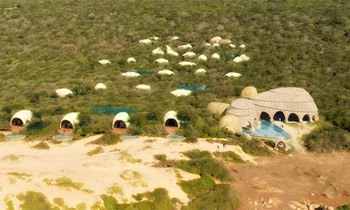
Additional 155 perches for Palatupana luxury camps
The government has decided to provide an additional land of 155 perches, apart from the previously given 7 acres, to the Wild Coast Lodge (PVT) Ltd to construct luxury tourist camps adjacent to the Yala National Park. Earlier, a land of 7 acres belonged to the Sri Lanka Tourism Development Authority in Palatupana area had been allocated to the company for this purpose. Tourism Development and Christian Religious Affairs Minister John Amaratunge has proposed to provide the additional block of land on a 50 year lease basis to continue the project. The Minister has also sought the approval of the Coast Conservation Department, Coastal Resources Management and the recommendations of Wildlife Conservation Department in continuing with construction works of the project. See more
Source- 25/01/2017Daily Mirror, See more at: http://www.dailymirror.lk/article/Additional-perches-for-Palatupana-luxury-camps-122732.html#sthash.ZHrHBfae.dpuf
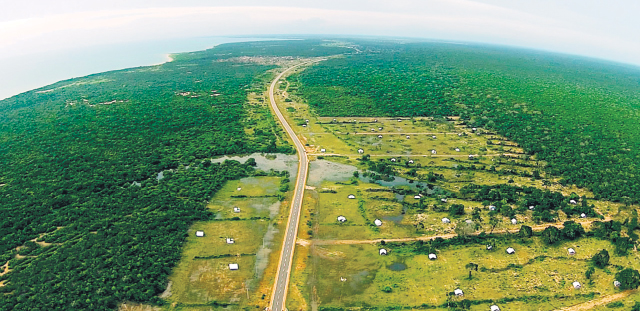
Environmentalists threaten legal action over N P deforestation
Environmentalists threatened to take legal action against the Government if it failed to take measures to control and halt the continuing destruction of forests in the Northern and Eastern Provinces for purposes of resettlement, new settlements, encroachment and timber rackets.
Environmentalists, the Presidential Secretariat personnel, officials of the Department of Forest Conservation and the Department of Wildlife Conservation are conducting discussions in this regard at present.
The Environment Conservation Trust explained that thus far 3,400 acres of forest cover had been cleared and new settlements erected in Wilpattu, in the forest reserves in Wilpattu North including in the zones of Maraichukkaddi/Karadikkuli, Vilathikulam and Mawillu.
Other forest reserves include Karunkalipuram, Puwarasankulam, Kulamarippu, Nagancholai, Irasenthiramkulam, the Madu Road. He said 17,800 acres have been cleared illegally to make way for new settlements in Mannar, Mullaitivu and Vavuniya where post-war, which were and are spreading.
Director of the Trust, Sajeeva Chamikara pointed out that in the case of forest clearance in Wilpattu, though the amount of human settlements and occupations were less, three times the land cleared for human settlements had been cleared including for purposes of land grabbing and timber racketeering.
Meanwhile, President Maithripala Sirisena’s directive to expand the borders of the Wilpattu National Park has yet to be implemented in the declared areas including the sanctuaries and zones.By RLJ
Source :21/01/2017 The Nation/See more at:http://nation.lk/online/2017/01/21/environmentalists-threaten-legal-action-over-n-p-deforestation.html
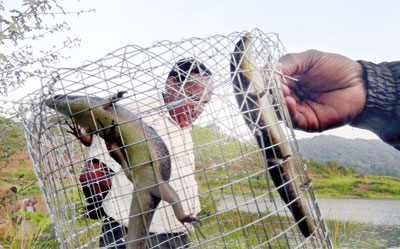
Small creatures of Moragahakanda get a helping hand
Operations to rescue and relocate small wild creatures trapped by the waters of the Moragahakanda reservoir are continuing.
Filling of water at the reservoir began on January 11.
Department of Wildlife Conservation officers with support from volunteers began rescuing wildlife species that had been trapped by the rising waters.
“Giant squirrels, squirrels, wild cats, reptiles, lizards, monitor lizards and snakes top the list of animals that we rescued,” says Wildlife Department’s chief veterinary surgeon, Dr Tharaka Prasad who led the rescue.
These operations are sometimes risky. Video footage show occasions when frightened animals could endanger rescuers.
Dr Prasad said rescued animals were released into nearby forested areas that will not be affected by the waters.
He said rescuers had so far not seen any large animals such as deer, wild boar, and elephants. He believes large animals have already moved to safer ground.
The filling of the reservoir has created 22 small islands which could become refuges for animals.
Earlier, a team lead by the IUCN Sri Lanka (International Union of Conservation of Nature) carried out animal rescues in the area. IUCN Sri Lanka’s Sampath Goonatilake who participated in the operations said a number of plant species that are important and threatened were translocated. The team had also relocated some freshwater fish.
According to IUCN, 80 animal species and 202 different plant species were identified from the affected area. The operation translocated 916 plants belonging to 58 species and a total of 2,414 animals belonging to 46 faunal species (fish and other species) according to IUCN. It also states that monitoring reveals an 84 per cent survival rate of transplanted plant species.
Dr Prasad of the Wildlife Department, said officials will account for the animals saved once the rescue

Minneriya gathering may turn sour for elephants
At Moragahakanda, a dam was built at Elahara across the Amban Ganga to create a reservoir. A second dam will be built at Pallegama in Matale across Kalu Ganga to create the Kalu Ganga reservoir. These two larger water bodies are about 10 kilometres apart and will be linked by a tunnel.
The project aims to provide water for drinking and irrigation for areas in Anuradhapura, Polonnaruwa and Trincomalee districts. The project also includes a hydropower plant to generate 25 megawatts of electricity.
About 3,500 families had to be resettled due to the project.
It is estimated that 70 per cent of the area affected by the project is forested land and it is believed that the conflicts between elephants and humans will increase. As the project aims to take water to Rajarata, tanks like Minneriya will remain filled during the dry season that lasts from July to about November. Minneriya National Park is famous for being the gathering place of large numbers of elephants every year between June and September. Environmentalists say that Minneriya being filled would be detrimental to the large herds of elephants that come feed on the lush grass growing on the plains in the dry season.By Malaka Rodrigo
Source : 22/01/2017 Sunday Times,See more at:http://www.sundaytimes.lk/170122/news/small-creatures-of-moragahakanda-get-a-helping-hand-225706.html













